Like insect pests damage, plant diseases by microbes cause severe destruction to the indoor and outdoor plants. One such example is rust disease. More than eight thousand species of rust diseases infect herbaceous and ornamentals, woody plants, and essential cereal crops.
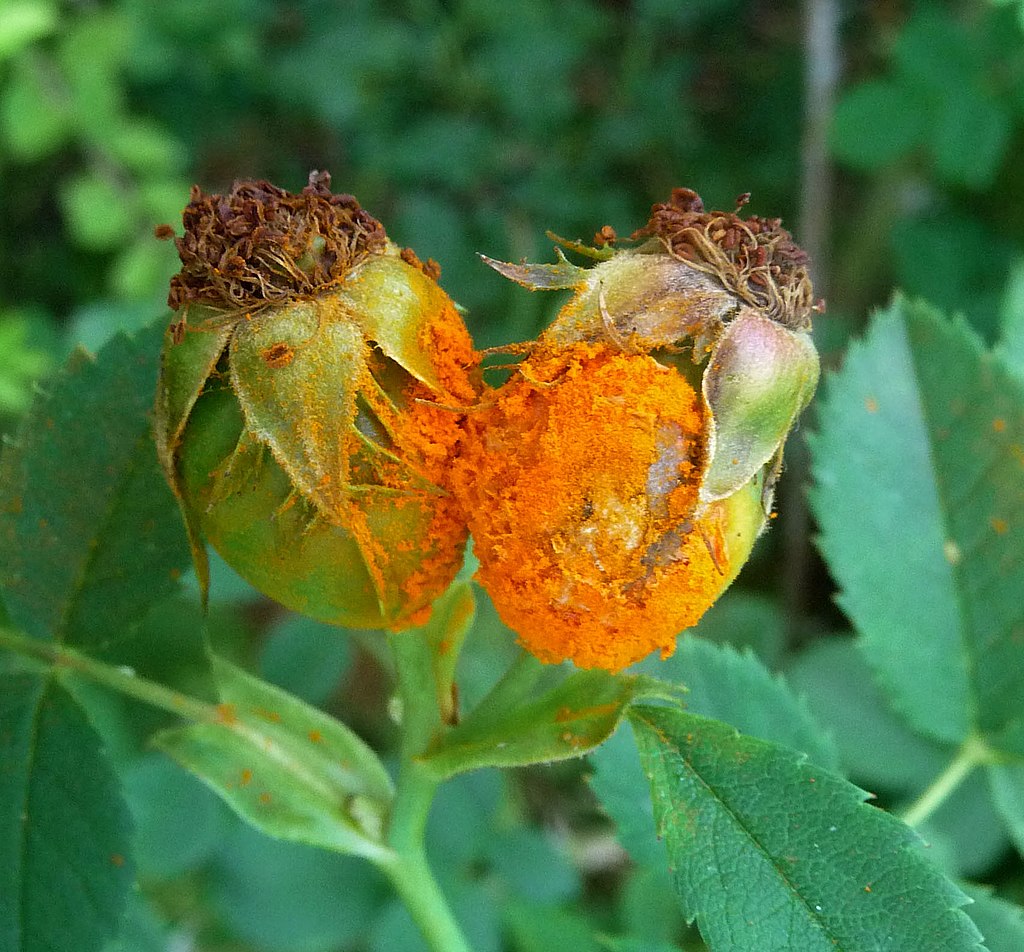
Rust disease on a flowering plant
Rust diseases are most common in tropical and subtropical regions of the world. Interestingly, rust diseases rarely kill infected plants, reducing plants’ vigor, reproduction growth, and production. Interestingly, plant rust pathogen impacts the overall health of their hosts. Therefore, it is crucial to understand rust disease, its causal agent, and effective management practices.
This write-up will discuss the symptoms of rust fungus infections in plants (indoor and outdoor) and their management through natural and chemical ways.
What is a Rust Disease in Plants?
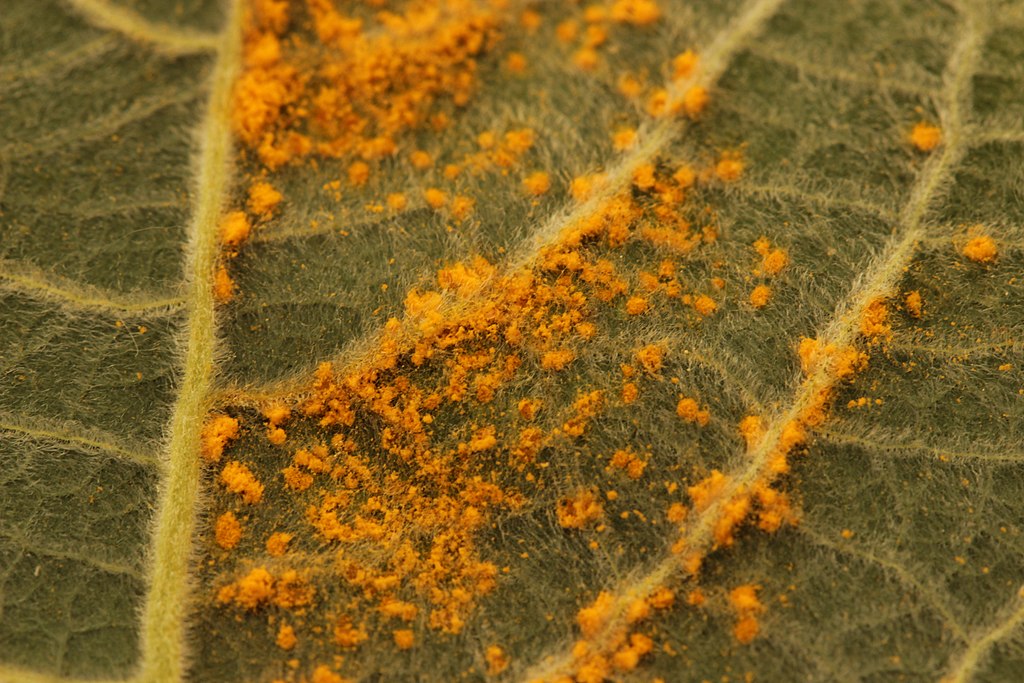
Rust fungus infection on the underside of Salix leaf
The plant rust disease is caused by many fungal pathogens that can not survive without a living host. The rust fungi need two unrelated plant hosts for their survival. In the absence of one host, these plant pathogens will not be able to reproduce and disperse.
Rust fungus belongs to order Puccinales and produces intense disease symptoms in mild, moist conditions. The rust disease spread from infected plants to healthy plants through the rust spores. These spores are also responsible for the disease spread over long distances due to wind and water.
Note: Rust fungi infections primarily occur in moist conditions, such the disease symptoms appear after watering. It is because wet plant surfaces provide favorable conditions to rust spores for germination.
What Are the Important Types of Rust Fungi?
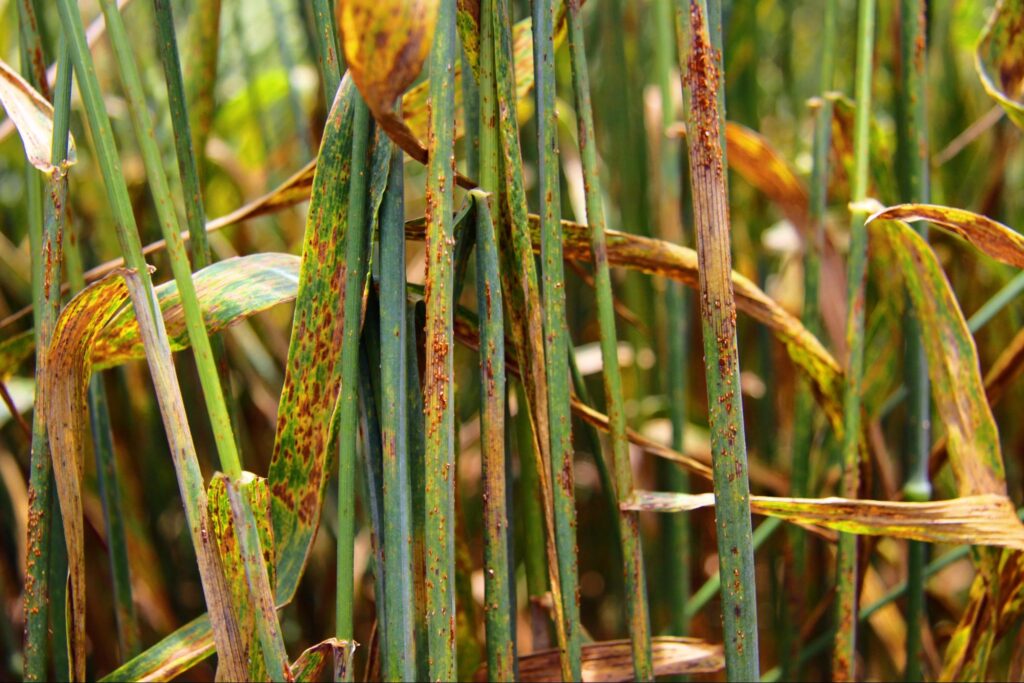
Wheat rust or wheat stem rust fungus—the deadly pathogen of wheat crop with severe yield reductions
Rust fungi are obligate parasites which means these plant pathogens can not live without their host plants. Due to this fact, it is believed that these fungal pathogens have millions of years to become highly specific for host plants. Therefore, one rust fungus must only adapt to particular host plant species such as similar ornamental plants and cereals (wheat crops) susceptible to different rust species.
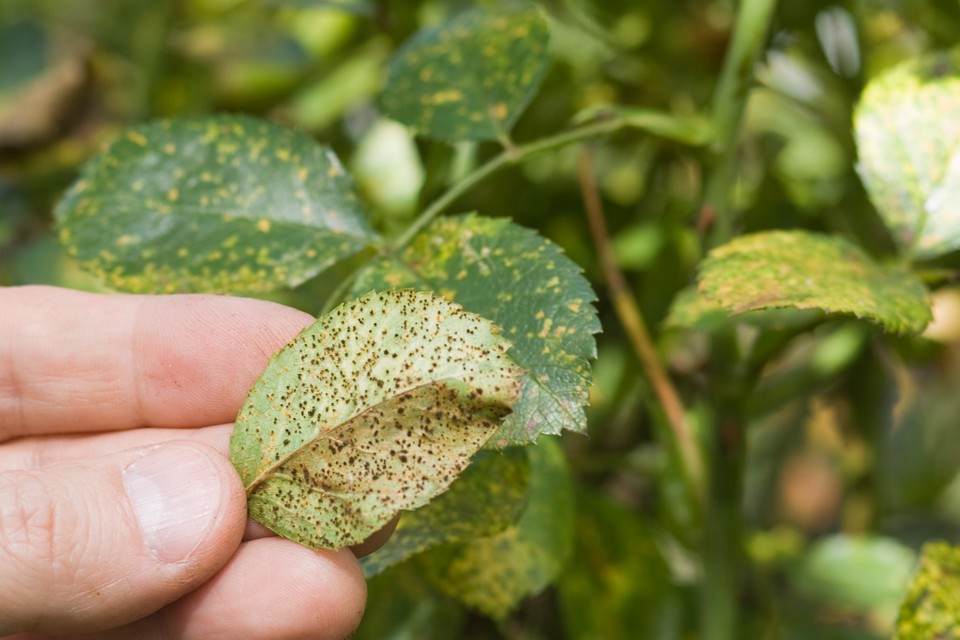
Rust fungus infection (fruiting bodies with rust spores) on an ornamental plant
Rust fungus infects various plants, such as ornamentals, cereals, and woody trees. The image above is an example of an ornamental plant infection.
What Are the Signs and Symptoms of Rust Fungus Infection in Indoor and Outdoor Plants?
Rust fungus infections on plants are straightforward to identify. The most common symptoms are the development of yellow, brown, black, and rust color spores on the underside of leaves. These spores appear as raised bumps and powdery on the leaves and stems of infected plants.
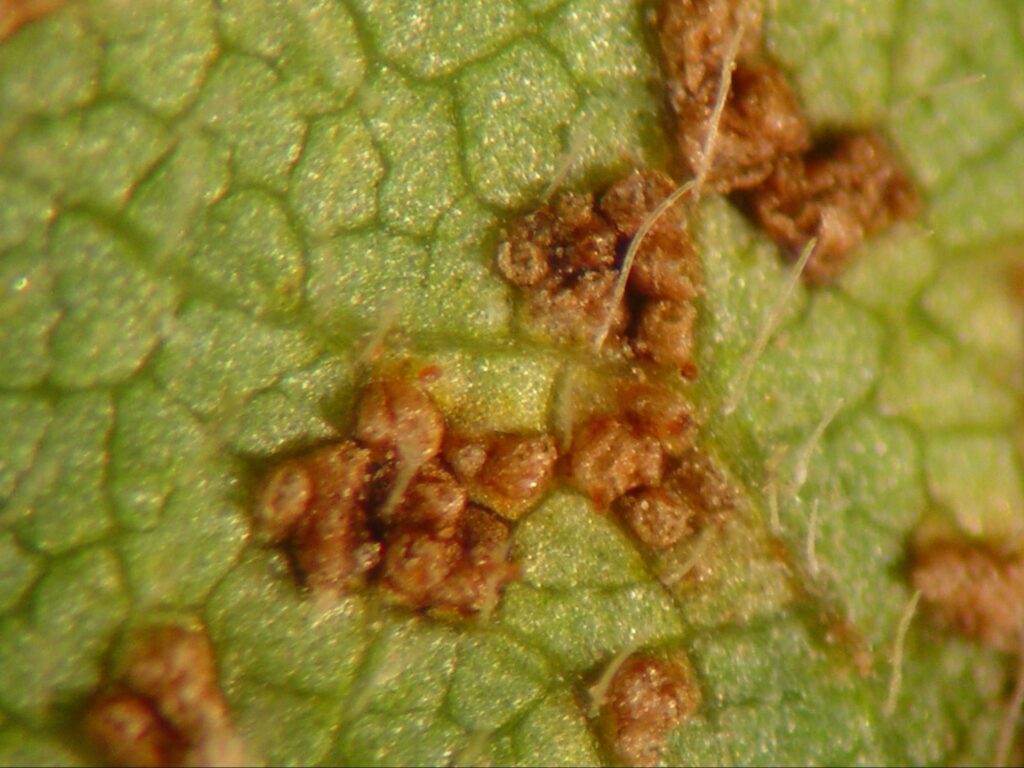
Rust fungus on a soybean leaf
These spore masses cover the whole leaf surfaces and deprive them of natural food-making during favorable weather conditions. In the case of heavy spore formation, the affected plants prematurely die, or their growth may remain stunted.
Additionally, the rust fungi infection also causes gall formation—later, the spore masses cover these galls and make it impossible for the plant to continue food processes. These fungal diseases also cause witch’s broom, particularly in woody plants.
The symptoms of rust fungi infections always start from the ground to up. The spore formation usually initiates from the underside of leaves and then proceeds to the upper side of leaves. However, this rust plant disease rarely kills a garden or an ornamental plant. Most importantly, if these plants remain untreated, they may die because rust disease badly damages the leaves and defense system of the host plant.
Note: One of the best ways to quickly identify the fungal plant diseases (rust fungi) in your garden or home lawn is to walk through the park and grass. If your shoes are covered with rust-colored powder or dust, you have a rust fungi problem.
Life Cycle of Rust Fungus
Rust fungi have a complex life cycle. They need two unrelated host plants to complete their life cycle with five stages of spore formation—both asexual and sexual.
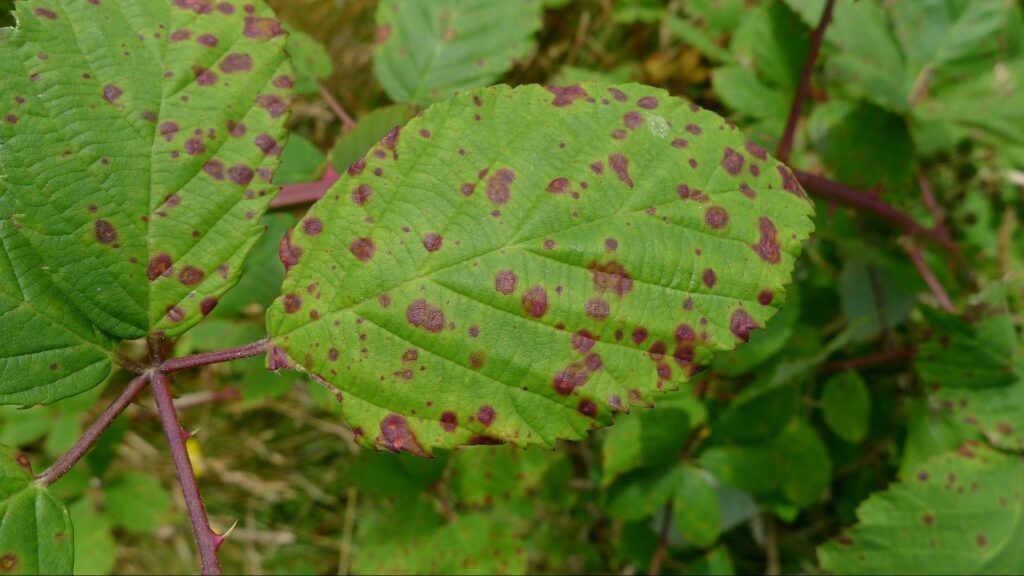
Rust fungus on the upper leaf surface of blackberry leaf—herbaceous plants
Wheat Stem Rust Fungus Life Cycle—As an Example
The rust spores land on a healthy plant leaf surface—require 4 to 6 hours of wet surfaces, then they germinate and penetrate plant leaf tissues. Once the infection establishes, the fungal pathogen starts feeding on the nutrients of the host plant.
As rust fungi feed on host cell nutrients, the pathogen grows and breaks out from host tissues. These are the urediniospores or the reddish-brown dust that can quickly spread through the wind. The urediniospores are all identical to each other and reproduce asexually.
Once the growing season for the first host plants for rust fungi ends, they start the second life cycle on another unrelated host (barberry—unrelated plant). The fungal pathogen produces black and overwintering sexual spores—teliospores during this stage.
The teliospores recombine on barberry leaves and produce aeciospores. These aeciospores erupt from host tissues and are ready to reinfect the wheat (same host) or other cereal host plants.
What Are the Plant Hosts for Rust Fungi Infection?
The following plants are badly infected with fungal plant disease during the summer season.
- Carnation
- Lily
- Snapdragon
- Aster
- Pansy
- Primrose
- Iris
- Sunflower
- Soybean (soybean rust)
- Barberry
How to Get Rid of Rust Fungus?
The rust fungus only germinates in wet conditions like other fungal plant diseases. It requires four to six hours of moisture to start propagation. Therefore, one of the critical steps in managing rust diseases is to stop overhead watering.
To avoid wet leaf surfaces:
- Use drip irrigation system to only water at ground level
- Use a watering wand to discourage water stay at the foliage
Note: Always water your garden plants in the morning. So that the sun’s energy will quickly dry out the leaf surfaces and will not let the spores germinate.
RELATED: How to Treat Plant Fungus with Baking Soda for Good?
Best Management Practices to Control Rust Disease
Maintain Hygiene Conditions
One of the best practices to avoid rust fungus is maintaining hygiene conditions. Remove diseased or infected plant foliage by hand to prevent the spread of disease through spores. Do not add or mix infected plant parts in compost in the garbage bin, not in the compost pile.
In the case of serious infections (leaves and stems fully covered with rust spores masses), pull out the entire plant and discard it.
Use Neem Oil to Treat Fungus on Ornamental Plants
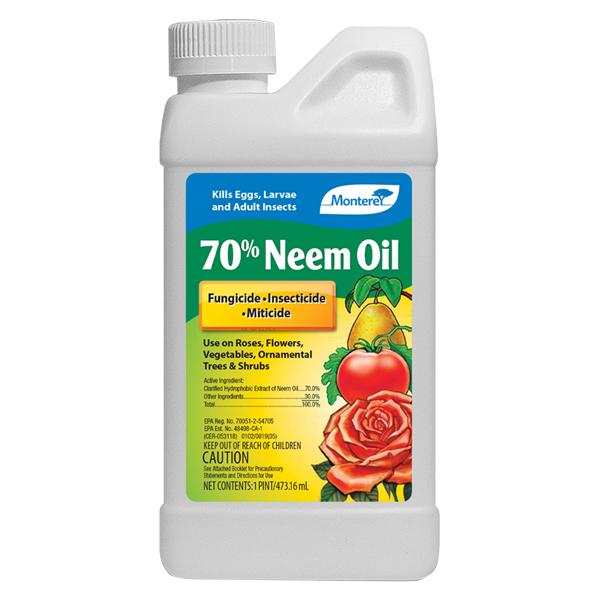
Triple action neem oil to treat rust fungi
Neem oil spray is effective in the management of fungal diseases as well. The application of this organic product inhibits the fungal spore germination, thus preventing plants from damage.
After removing dead plant parts, a biweekly spray of neem oil will kill the fungal spore masses and prevent their spread to neighboring healthy plants.
Use Sulfur Dust to Kill Rust Fungi
The dusting of sulfur on garden plants prevents the fungus from germination and growth.
Horticultural Oils and Baking Soda to Treat Fungal Plant Disease
The baking soda spray and horticultural oils work best in managing rust fungus. They kill the fungus and spore germination. Alternatively, prevent the plant from damage through spore dispersal.

Baking soda—an organic fungicide to kill rust fungi
Use Chemical Fungicides to Treat Rust Diseases on Garden Plants

Commercially available fungicides to treat rust fungus on garden plants
The other best option to timely manages the rust diseases on garden plants is spraying chemical fungicides. Always make sure the commercially available fungicides have the following ingredients:
- Chlorothalonil
- Mancozeb
- Myclobutanil
Use Resistant Varieties to Avoid Infection
One of the best and foremost plants rust prevention strategies involve using resistant varieties. Planting resistant varieties will ward off the pathogen at the first stage.
Frequently Asked Questions
What Is the Best Fungicide For Rust?
The best fungicide for a plant rust treatment are those which contain the following active ingredients:
- Myclobutanil
- Mancozeb
- Chlorothalonil
Applying these chemicals during summer (July) will kill the asexual spores (urediniospores) and interrupt their life cycle.
Is Rust Fungus Toxic?
Rust fungus is not toxic to humans and pets. However, the plants infected with rust diseases produce little to no fruit. Moreover, the quality and taste of the fruit are always off due to spore formation.
How is Leaf Rust Transmitted?
The mode of leaf rust dispersal is wind and water. When the reddish-colored pustules burst, the air currents disperse the spores over long distances. When these spores land on wet and healthy leaf surfaces, they germinate and penetrate the plant tissues.
How Do I Get Rid of Rust in My Yard?
Following are the best practices to get rid of rust (fungal disease) in the yard:
- Remove and discard heavily infected plants and do not place them in composting bin
- Spray plants with neem oil, horticultural oils, and apple cider vinegar
- Use baking soda spray and sulfur dusting to discourage the germination of spores
- Spray plants with commercially available chemicals
- The best precautions to prevent garden and lawn grass from rust are avoiding excessive watering and maintaining garden hygiene.
Sources for Further Reading
- Planet Natural. (2022, March 6). Rust Fungus: Identify Symptoms to Treat and Control Rust Disease. Retrieved March 21, 2022, from https://www.planetnatural.com/pest-problem-solver/plant-disease/common-rust/
- C. (2022a, February 7). How To Get Rid Of Rust Fungus – An Overview. Gardening Dream. Retrieved March 21, 2022, from https://www.gardeningdream.com/how-to-get-rid-of-rust-fungus/
- Rust Diseases of Wheat. (n.d.). Ohioline. Retrieved March 21, 2022, from https://ohioline.osu.edu/factsheet/plpath-cer-12
Now that you know more about rust fungus, make sure to also read our other articles about plant diseases and problems:
Why Are The Leaves Turning Yellow? 8 Reasons Why Your Pothos Is Changing Color







